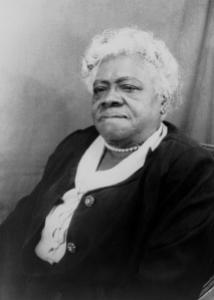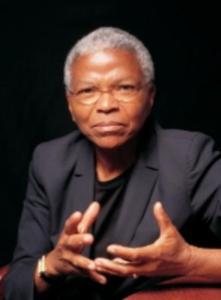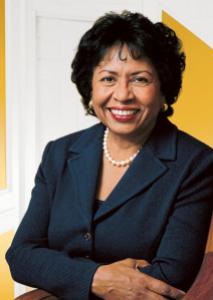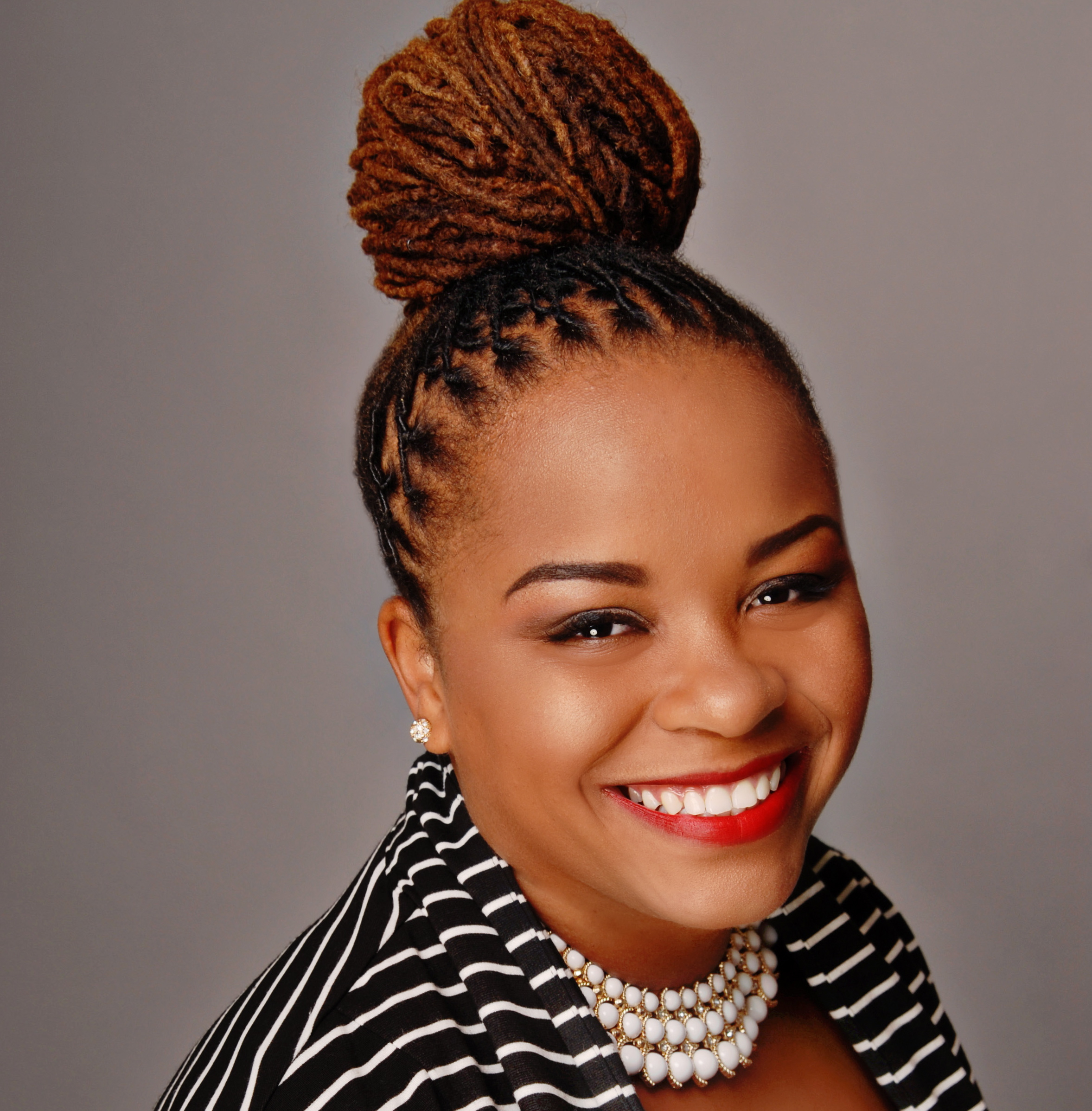Just over thirty years ago in 1981, a Congressional Resolution proclaimed Women’s History Week, and six years later, the celebration was expanded to the entire month of March.
Designed as a means of promoting equality among the sexes in the classroom, National Women’s History Month programs around the nation, have centered on an annual theme for the past three years. This provides the perfect opportunity for the Historically Black College and University (HBCU) community to laud the accomplishments of countless HBCU women who have changed the world, for the better.
We begin by celebrating HBCU alumnae who have risen through the highest ranks of college leadership to become college presidents. In the tradition of Dr. Johnnetta B. Cole, we’ve dubbed them “Sister Presidents.” We ask you to join our celebration with posting HBCU women on social media outlets with the hashtags #HBCUstory and #HBCUWomen.
 The fifteenth of seventeen children born to former slaves, Mary McLeod Bethune attended Barber-Scotia College (then Scotia Seminary) in Concord, North Carolina from 1888 to 1894. She, like many HBCUers, depended on scholarships, part-time jobs, and familial sacrifice in order to attend college. It was this reality that prompted her to found the Literary and Industrial Training School for Negro Girls in Daytona, Florida in 1904. Although Bethune began with just $1.50 and six students, “The school expanded fast,” later recalled Bethune. “In less than two years I had 250 pupils. I concentrated more and more on girls, as I felt that they especially were hampered by lack of educational opportunities.” Less than two decades later, in 1923, she agreed to merge the school with the Cookman Institute, a Methodist school for Negro boys to form Bethune-Cookman College.
The fifteenth of seventeen children born to former slaves, Mary McLeod Bethune attended Barber-Scotia College (then Scotia Seminary) in Concord, North Carolina from 1888 to 1894. She, like many HBCUers, depended on scholarships, part-time jobs, and familial sacrifice in order to attend college. It was this reality that prompted her to found the Literary and Industrial Training School for Negro Girls in Daytona, Florida in 1904. Although Bethune began with just $1.50 and six students, “The school expanded fast,” later recalled Bethune. “In less than two years I had 250 pupils. I concentrated more and more on girls, as I felt that they especially were hampered by lack of educational opportunities.” Less than two decades later, in 1923, she agreed to merge the school with the Cookman Institute, a Methodist school for Negro boys to form Bethune-Cookman College.
Armed with her steadfast belief in the transformative power of education, Bethune served as the school’s president from its inception until 1942. In addition to her role as the school’s primary advocate and tireless fundraiser, Bethune was nationally acclaimed as a race leader. In 1935, Bethune notably founded the National Council of Negro Women (NCNW), the nation’s largest federation of black women’s organizations, and served as its president until 1949.
 Several HBCU alumnae have followed in Bethune’s footsteps. Dr. Johnnetta B. Cole is arguably the best well-known HBCU alumna to lead a black college. By the time she authored “Conversations: Straight Talk with America’s Sister President” in 1993, Cole, the first African-American female president of Spelman College, was already synonymous with the nation’s oldest and most distinguished black college for women. A cultural anthropologist by training, fifteen-year-old Cole was an early admit to Fisk University. Despite transferring to Oberlin College, Cole’s time at Fisk exposed her to important black intellectual discourse through contact with figures such as poet and Fisk librarian Arna Bontemps. After her decade-long headship of Spelman (1987-1997), Cole assumed the presidency of Bennett College for women in 2002 through 2007.
Several HBCU alumnae have followed in Bethune’s footsteps. Dr. Johnnetta B. Cole is arguably the best well-known HBCU alumna to lead a black college. By the time she authored “Conversations: Straight Talk with America’s Sister President” in 1993, Cole, the first African-American female president of Spelman College, was already synonymous with the nation’s oldest and most distinguished black college for women. A cultural anthropologist by training, fifteen-year-old Cole was an early admit to Fisk University. Despite transferring to Oberlin College, Cole’s time at Fisk exposed her to important black intellectual discourse through contact with figures such as poet and Fisk librarian Arna Bontemps. After her decade-long headship of Spelman (1987-1997), Cole assumed the presidency of Bennett College for women in 2002 through 2007.

Inspired by her mentor Fisk alumna Minerva Hawkins, Dr. Mary Frances Berry also began her undergraduate work at Fisk, but transferred to Howard University, where she received her bachelor’s degree. After earning master’s, doctoral and juris doctorate degrees, Berry’s tenure at the University of Maryland peaked in 1974 when she became the highest-ranked black woman on the Maryland’s College Park campus. In 1976, Berry accepted the chancellorship of the University of Colorado’s Boulder campus, becoming the first black woman to head a major research university. In another “first,” Berry also became the assistant secretary for Education (1977-1980), the first African-American woman to serve as the chief educational officer in the United States.
 Dr. Ruth Simmons was the youngest of twelve children born to sharecroppers. An alumna of Dillard University, Simmons earned her master’s and doctoral degrees from Harvard University, focusing on the literature of francophone Africa and the Caribbean. Her fast-track through the ranks of higher educational administration resulted in her appointment as the president of Smith College in 1995, making her the first African-American woman to head a major college.
Dr. Ruth Simmons was the youngest of twelve children born to sharecroppers. An alumna of Dillard University, Simmons earned her master’s and doctoral degrees from Harvard University, focusing on the literature of francophone Africa and the Caribbean. Her fast-track through the ranks of higher educational administration resulted in her appointment as the president of Smith College in 1995, making her the first African-American woman to head a major college.
She left the presidency of Smith in 2001 to assume the headship of Brown University, which earned her another “first,” this time as the first African-American president of an Ivy League institution. As the president of Brown, Simmons completed Boldly Brown: The Campaign for Academic Enrichment, a $1.4 billion initiative to enhance Brown’s academic programs. In 2003, she appointed a Steering Committee on Slavery and Justice to investigate and to prepare a report about the University’s historical relationship to slavery and the transatlantic slave trade. Three years later, the committee presented its final report which included an exploration of Brown’s deep ties to slavery and the slave trade. Simmons stepped down from the Brown presidency in 2012.
More HBCU Alumnae Presidents: At-A-Glance
- Mathematician Dr. Dolores Richard Spikes is among Southern University’s most distinguished alumni. She served as chancellor of the Southern University and A & M College System from 1988 to 1996, becoming the first woman in the United States to head a university system. Spikes then served as the president of the University of Maryland-Eastern Shore from 1996 to 2001.
- Anthropologist Dr. Niara Sudarkasa entered Fisk at age fifteen and transferred to Oberlin after a visiting the school on an exchange program. From 1986 to 1998, Sudarkasa was the first female to serve as president of Lincoln University in Pennsylvania.
- Pediatrician and public health administrator Dr. Audrey Forbes Manley is an alumna of Spelman College and Meharry Medical College. From 1997 to 2002, she served as Spelman’s first alumna president, joining her husband Dr. Albert E. Manley, who was the first African-American and male president of Spelman College (1953-1976), in the pantheon of Spelman history.
- Educational administrator Dr. Dianne Boardley Suber, a Hampton University alumna, has been the first female president of St. Augustine’s College in Raleigh, North Carolina since her appointment in 1999.
- In 2002, Fisk University alumna Dr. Carolynn Reid-Wallace became the thirteenth president of her alma mater. She was succeeded in 2004 by fellow Fisk alumna, and seventh Secretary of Energy Hazel O’Leary, who serves as the school’s fourteenth president.
- Since 2002, Tougaloo College (and Jackson State University) alumna Dr. Beverly Wade Hogan has led her alma mater as its thirteenth president.
- Developmental psychologist and Howard University alumna Dr. Pamela Trotman Reid has served as the eighth president of Connecticut’s Saint Joseph College since 2008.
- Previously the fourth president of the Norfolk State University from 2006 to 2010, Howard University alumna Dr. Carolyn Winstead Meyers is currently the president of Jackson State University.
- In 2011, Voorhees College alumna Dr. Pamela Wilson became the first female president of South Carolina’s Allen University.
 A 2003 graduate of Fisk University, Crystal A. deGregory, Ph.D. is the founder and executive editor of HBCUstory, Inc. an advocacy center presenting inspiring stories of the HBCUs past and present, for our future. She teaches in Tennessee State University’s department of history, political science, geography and africana studies department. Follow her on twitter at @HBCUstorian.
A 2003 graduate of Fisk University, Crystal A. deGregory, Ph.D. is the founder and executive editor of HBCUstory, Inc. an advocacy center presenting inspiring stories of the HBCUs past and present, for our future. She teaches in Tennessee State University’s department of history, political science, geography and africana studies department. Follow her on twitter at @HBCUstorian.













